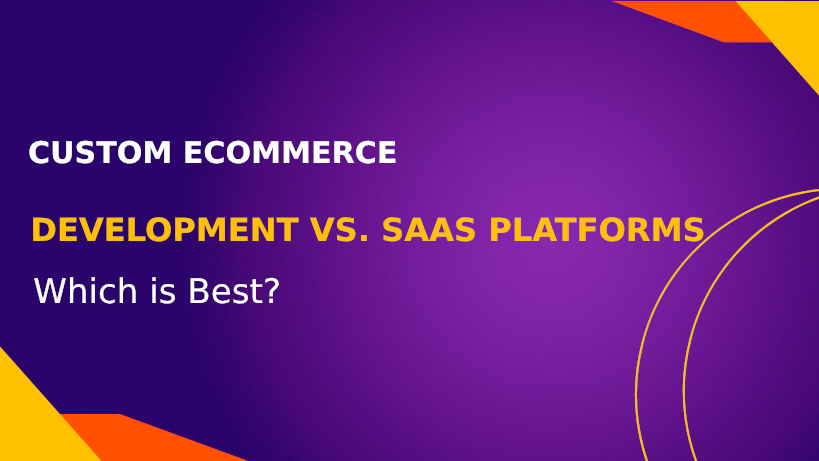
Introduction to Custom Web Solutions
In today's digital landscape, first impressions are everything. A website can make or break a user's experience, and that's where custom web solutions shine. They provide tailored approaches to web development that prioritize user experience (UX) above all else. Imagine a site designed specifically for the needs of your audience—seamless navigation, engaging visuals, and content that speaks directly to them. Custom web solutions not only enhance how users interact with your brand but also foster loyalty and satisfaction.
Dive in as we explore seven transformative ways these bespoke strategies elevate UX design and set businesses apart in an ever-competitive online marketplace.
Why User Experience Matters?
User experience (UX) is the heartbeat of any website. It shapes how users perceive and interact with your services.
When visitors land on your site, their first impression can make or break their journey. A positive UX keeps them engaged, while a negative one sends them running elsewhere.
Today’s digital landscape is competitive. Users have choices, and they won’t hesitate to click away if they encounter frustration.
Good UX design leads to higher conversion rates too. When navigating is intuitive, users are more likely to complete desired actions—whether signing up for a newsletter or making a purchase.
Moreover, exceptional user experiences foster brand loyalty. Satisfied customers return again and again, acting as ambassadors for your brand in an ever-evolving marketplace.
Investing in user experience isn’t just about aesthetics; it’s about creating meaningful connections that drive success over time.
Personalization: Tailoring the Website to Individual Users
Personalization is a game changer in web development. It allows businesses to create unique experiences for each visitor based on their preferences and behaviors. This tailored approach captures user attention like never before.
Imagine landing on a website that remembers your last visit, showcasing products or content you’re genuinely interested in. This not only enhances engagement but also fosters loyalty.
Utilizing data from various sources, such as browsing history and user demographics, companies can curate specific offerings. Dynamic content adapts in real-time, making every interaction feel relevant and special.
Moreover, personalization extends beyond mere recommendations. It involves adjusting layouts and features according to individual needs. By focusing on what users value most, websites become more intuitive and efficient.
Responsiveness: Ensuring Smooth User Interaction Across Devices
Responsiveness is key in today’s digital landscape. Users access websites from various devices, including smartphones, tablets, and desktops. Each device has its own screen size and capabilities.
A responsive design adapts seamlessly to these variations. This means resizing images, adjusting layouts, and modifying content presentation based on the user’s device. When done right, it creates a uniform experience that feels tailored to each visitor.
Imagine browsing a site on your phone only to find it poorly formatted. Frustrating, isn’t it? A smooth interaction across devices keeps users engaged longer and reduces bounce rates.
Accessibility: Making the Website Inclusive for All Users
Accessibility in web design is about more than compliance; it’s about community. A website should be a welcoming space for everyone, regardless of their abilities or disabilities.
Consider users with visual impairments. Implementing alternative text for images and ensuring that color contrasts are sharp can make your site navigable for screen readers. This simple addition opens doors to content that may have otherwise been lost.
Then think about those who navigate using keyboards instead of mice. Streamlined navigation and keyboard shortcuts enhance usability significantly.
Speed and Performance: Enhancing User Satisfaction and Engagement
Website speed and performance are crucial for a seamless user experience. Users today expect websites to load in mere seconds. If your site is sluggish, they may quickly lose interest.
Custom web solutions allow developers to optimize loading times specifically for your audience. By implementing strategies like image compression and efficient coding practices, you can significantly reduce wait times.
Fast-loading pages lead to higher engagement rates. When users don’t have to wait, they are more likely to explore content and interact with features on the website.
Analytics and Feedback: Gathering Data to Continuously Improve UX
Analytics and feedback play a crucial role in enhancing user experience. By harnessing data, businesses can gain insights into how users interact with their custom web solutions.
Tracking metrics like page visits, click rates, and session durations allows for informed decision-making. These numbers reveal what works well and what needs improvement.
User feedback offers another layer of understanding. Surveys, polls, or direct comments can highlight pain points that analytics alone may not capture. Listening to the audience fosters loyalty and trust.
Security: Protecting User Information and Building Trust
In today's digital landscape, security is non-negotiable. Custom web solutions prioritize safeguarding user information.
By implementing robust encryption techniques and secure sockets layer (SSL) protocols, developers ensure that sensitive data remains private. This proactive approach not only protects users but also signals professionalism and credibility.
Trust becomes a cornerstone of user experience when visitors feel confident that their personal details are safe. Transparent privacy policies further enhance this trustworthiness, allowing users to understand how their data will be used.
Case Studies of Successful Custom Web Solutions
Examining real-life examples of successful custom web solutions reveals the profound impact these strategies have on user experience. Many businesses have embraced tailored websites to stand out in a competitive market.
Take, for instance, an e-commerce platform that revamped its site with personalized product recommendations based on user behavior. This approach not only boosted sales but also enhanced customer satisfaction by making shopping more intuitive and enjoyable.
Another case involves a nonprofit organization that prioritized accessibility in its design. By ensuring their website met WCAG guidelines, they opened doors for users with disabilities, thus widening their audience and increasing engagement significantly.
A tech startup focused on speed and performance saw remarkable results after optimizing their site’s load times. Users reported higher levels of satisfaction due to the seamless browsing experience, which translated into improved retention rates.
Conclusion
Custom web solutions are a game changer in enhancing user experience. From personalized content and responsive design to robust security and actionable analytics, tailored websites address the specific needs of users and businesses alike.
Today’s digital landscape is competitive. Users have choices, and they won’t hesitate to click away if they encounter frustration.
Good UX design leads to higher conversion rates too. When navigating is intuitive, users are more likely to complete desired actions — whether signing up for a newsletter or making a purchase.
Moreover, exceptional user experiences foster brand loyalty. Satisfied customers return again and again, acting as ambassadors for your brand in an ever-evolving marketplace.
Investing in user experience isn't just about aesthetics; it's about creating meaningful connections that drive success over time.
Ready to elevate your website's user experience with custom web solutions? Discover how AnchorPoints can help you create a personalized, responsive, and secure website that keeps users engaged and drives business growth. Contact us today to get started!






